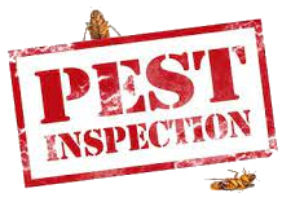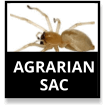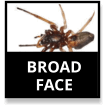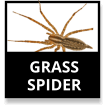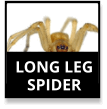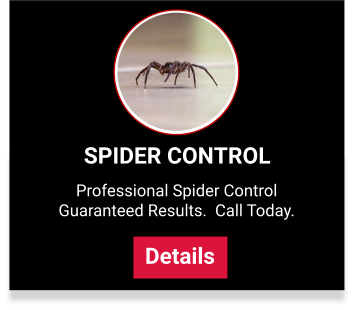GRASS SPIDER CONTROL
During the summer in Philadelphia and New Jersey, it is not unusual to see the signs of grass spiders in lawns. These arachnids are part of the funnel web weaving family of spiders. This means that they are most frequently identified by the unusual shape of their webs.
Those webs look and function a bit like caves for these pests. After building a funnel web, the grass spider lurks inside it, waiting for prey to walk by. When it does, the spider lunges at it and hopefully comes away with a meal.
Grass spiders are capable of moving with incredible speed, which helps to ensure that they almost always catch their prey. The insect is drug back into the funnel web, but this is not the only way that grass spiders get a meal. When resting deep within the funnel, the grass spider is alerted by telegraph lines when prey stumbles into the entrance of its web.
Accordingly, grass spiders have a voracious appetite for insects, many of which are considered pests in the yard and garden. This means that these arachnids might receive a mixed reaction in residential yards and commercial landscaping. Some gardeners are happy for the help with problematic insects. Others do not like to see numerous webs marring an otherwise attractive lawn.
Property owners who fall into the latter category are encouraged to take action. A licensed pest management professional can solve grass spider problems without putting people, pets or the environment at risk. Using specialized products that specifically target grass spiders and other pests, it is possible for exterminators to get rid of troubling arachnids.
WHAT DO GRASS SPIDERS LOOK LIKE?
Grass spiders have some physical characteristics that are similar to wolf spiders. Females generally are between one half inch and three-quarters of an inch long with males being slightly smaller. Members of the species appear to have short tails, but these actually are oversized spinnerets that are affixed to the abdomen.
Brownish-yellow is a common coloring for grass spiders, and they have a pair of black stripes running along the abdomen. The legs are likely to be either a dark yellowish brown or cream-colored. The abdomen itself is decorated with a chevron pattern. This chevron pattern can be used to definitively differentiate grass spiders from wolf spiders.
WHAT DO GRASS SPIDERS EAT?
A population of grass spiders can eat a large number of insects. Most of these are walking bugs that accidentally wander into grass spider territory, but flying insects also may be victims if they land in the wrong place. Consequently, grass spiders live on a steady diet of butterflies, moths, harvestmen, beetles and many other insects.
WHERE DO GRASS SPIDERS LIVE?
Perhaps the most common place to find grass spiders nesting is in lawns. Typically, they look for somewhat short grass that can support a funnel web a few inches above the ground's surface.
Grass spiders do not always restrict their activity to grass. Sometimes, they are found building webs across hardscape surfaces or even inside buildings. Many property owners discover nests in the window wells of outbuildings.
Female grass spiders die off in the fall or winter, but not before leaving behind an egg sac. Those spiderlings hatch in the spring and quickly spread out to build their funnel webs in the surrounding area. It is not unusual to see hundreds of baby spiders emerging from a single grass spider funnel.
As the season progresses and the grass spiders become larger, their webs also grow. With the potential for thousands of grass spiders to be inhabiting a single piece of property, the landscape soon may be overrun.
DAMAGE CAUSED BY GRASS SPIDERS
Because they eat so many pests, some property owners are not opposed to allowing a handful of grass spiders to live in their lawn. However, if no control measures are enacted, a small population of grass spiders can explode.
The presence of perhaps hundreds of funnel webs in a lawn certainly can spoil its aesthetics. Even the gardener who is happy to see a few grass spiders sharing their space may become dismayed when the lawn seems to be infested. The good news is that the spiders do not actually harm the grass. Still, no one wants to look out the window and see that their entire lawn is dotted with funnel webs.
On the surface of the grass, these webs cast a particularly wide perimeter. They catch not only insects but also dust, dirt, grass clippings, twigs, dead leaves and other debris. Accordingly, it is not easy to achieve a smooth, flawless lawn while grass spiders are in residence.
If the lawn is heavily infested, then it is likely that some grass spiders will wander farther to look for a nesting site. This may drive them to use paved or graveled surfaces or to look to structures as places to build a funnel web.
ARE GRASS SPIDERS AGGRESSIVE?
Grass spiders certainly are aggressive toward insects that come too close to their webs. However, this behavior does not extend to people. There is little to fear even from a large population of grass spiders.
DO GRASS SPIDERS CARRY DISEASE?
People with these problems frequently wonder if grass spiders are poisonous, but this is not the case. They are venomous, just as all spiders are. However, this venom is not a threat to people. It is really only used to subdue prey that gets caught in the grass spider's web.
Grass spiders do have fangs, but these are not large enough or strong enough to puncture human skin. The exception to this is babies and elderly people. These two age populations have thinner skin, making them more vulnerable to the grass spider's bite. Minimal irritation is the most common reaction to a bite, but it is possible to develop a bacterial infection or a necrotic skin lesion if the bite is not properly cleaned and treated.
HOW TO DETECT GRASS SPIDERS
Property owners may suspect an infestation of grass spiders based on:
- The presence of many funnel webs on the property, most visible after rain or with morning dew
HOW TO PREVENT GRASS SPIDERS
Take steps to ensure that grass spiders are less likely to live in your landscaping may include:
- Mow the lawn frequently
- Keep vegetation pruned near structures
- Get rid of brush piles
- Clean up food remains
- Keep garbage contained in cans
- Place pet food out only at mealtimes
- Eliminate conditions that may attract grass spider prey, food spills and crumbs
- Wash dishes immediately
- Use a broom to remove spider webs
- Have regular pest control services performed on the entire property
HOW TO TREAT FOR SPIDERS
Spider treatment involves the detection and elimination of all webs. If this is not done, the spiders are likely to re-infest the structure. Generally, it is not possible to completely eliminate spiders with do-it-yourself products. As such, successful spider eradication should be left for a pest control professional who has the tools and experience to get the job done safely and effectively.
At Newtown Termite & Pest Control, Inc., we take your spider problems seriously. That's why we use a multifaceted process including the treatment of wall voids, attics, and cracks and crevices throughout the premise with gels, dusts, and other specialized products.


